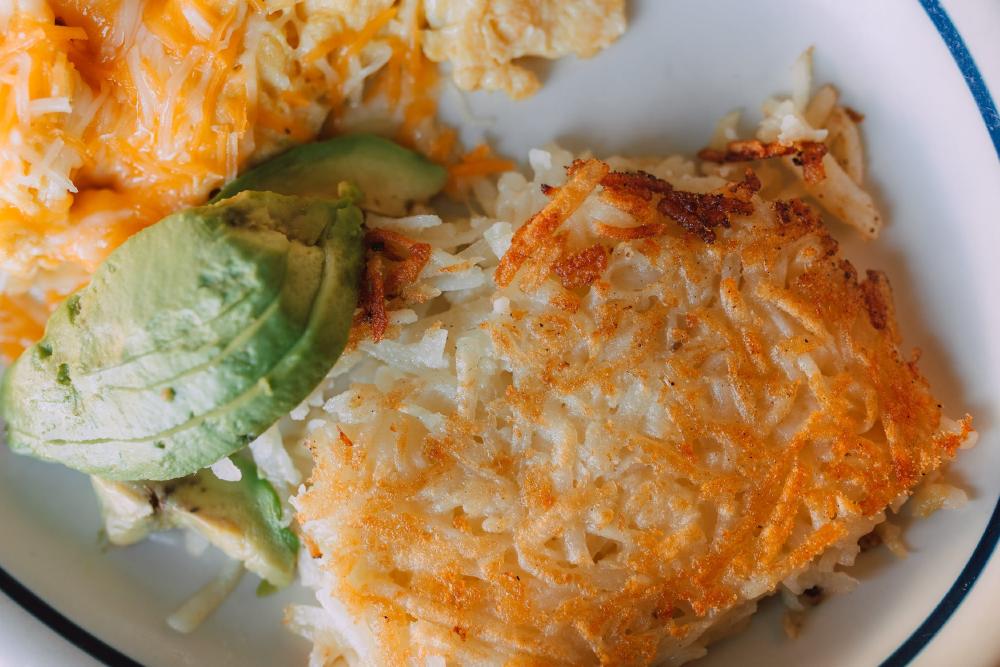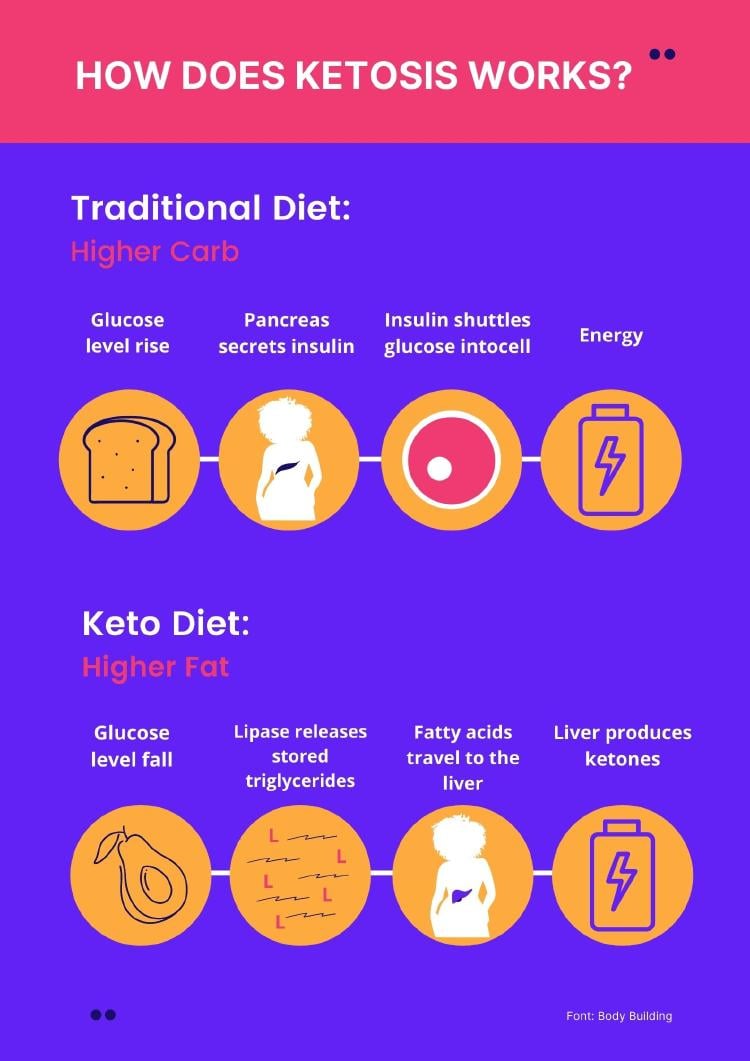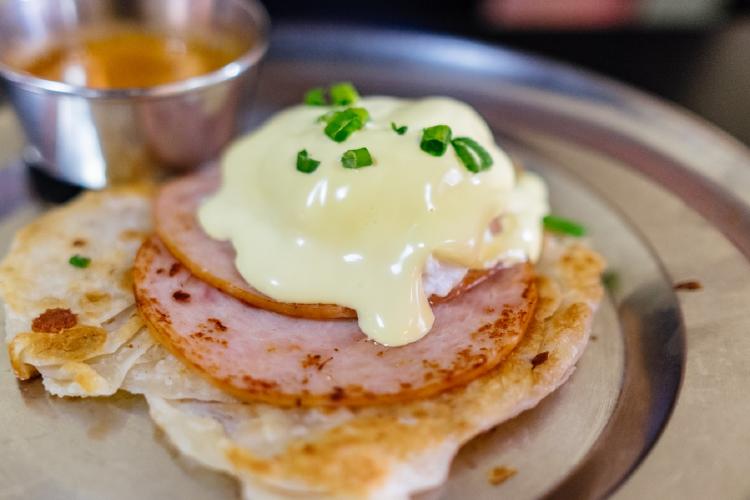
You may wonder what makes this low carb diet different from other well-known plans which were so popular in the recent past such as the Atkins or Dukan diet. In fact, Keto diet bears similarities with any other low carb diet but prioritizes fat intake and little amounts of proteins. Now, what’s the Keto diet precisely? What’s a proper Keto diet definition? Does it work? There’s evidence Keto diet helps you lose weight and keep your appetite down at least in the short run. A wish granted, right? Read more about What's Keto Diet Definition? The Nuts and Bolts of Keto Diet, plus the ups and downs of going into this controversial high-fat plan.
A precise Keto diet definition might be: a nutritional plan that aims at consuming good fats and avoiding carbohydrates while keeping a moderate intake of proteins. But, in a nutshell, eating fat does the trick. So far, so good. Now, how does Keto diet impact on the body? Is it a good diet to lose weight? What food is included in a Keto diet? Is it right for you?
To read more about what Keto diet is from a scientific perspective there are plenty of books about Keto diet. Don’t miss The Case for Keto: Rethinking Weight Control and the Science and Practice of Low-Carb, High-Fat Eating, by Gary Taubes, which offers a concise Keto diet definition with all the facts and details.
The standard Ketogenic diet is based on approximately 70% fat, 20% protein and 10% carbs, the decrease in carb intake makes your body enter in the metabolic state of ketosis by which your body turns fat into energy more efficiently using ketones. Ketones are produced in the liver from fat. In other words, your body doesn’t have any other option but burning fat all day to keep you working. Sounds like a good diet to lose weight as it relies mainly on fat burning.
What the Keto diet is and what is not is the first step to know how to start this plan. Thus, it's important to know the basics so as to follow a good plan and organize every meal to start a Keto diet and be successful. Remember side effects and drawbacks are always round the corner, at least at the beginning of any nutrition plan. It’s important you ask a dietitian or trusted physician before going on Keto. Once ready, follow this ultimate guide with all you need to know to ketofy your life.

Among the benefits/ advantages, the Keto diet can:
These are some side effects when entering ketosis, at least during the first period:
Keep in mind that all these effects are quite normal and disappear in the short run.
When you wonder “what’s Keto diet?” you may think you have few possibilities as you must avoid carbs; however, there are plenty of foods you can eat to get a real Keto meal:

The classic bacon-and-egg breakfast goes well with avocado and sour cream. Don’t forget to sip a creamy bulletproof keto coffee and you’re ready to start your day.
A veggie option would include tomatoes,cucumber, avocado with some olive oil. You can also try Greek yogurt with granola.

Be creative! You can combine different ingredients to have a great and delicious keto dish without carbs. Always remember your plate should look attractive and colorful, it’s all in the mind! Chicken masala with creamy blue cheese sauce and crunchy roasted peanuts sprinkled on top.Yummy!
You’d rather have a quick meal? Then you should try a Keto burger. Ground beef hamburger with lettuce, red onions, bacon and fried egg. Don´t forget to add mayo for extra fat and sabor!
During summer and hot days, you can try a variety of salads with shrimp, avocado and fresh tomatoes. Always avoid starchy vegetables such as potatoes, pumpkin or corn.
It’s a good idea that you always combine ingredients according to your macro ratios to mainly avoid high-carbs food which can derail your progress.

You can opt for a simple keto chocolate bar, of course. But why not trying a gourmet dessert? It’s all about enjoying yourself while you cook your own meals. A keto Tiramisu doesn’t sound like a pretty quick option. But try preparing the sponge with some eggs, butter, and almond flour. Then, make the cream with Mascarpone cheese and heavy cream. Assemble with coffee and garnish with cocoa powder! See more here.
There are a lot of books about keto diet meals and recipes but you can’t miss our next article: Best Keto Diet Plan for Beginners: Recipes and Advices
What’s the keto diet like when you have to adjust it to your energy needs being an athlete?
Keep in mind that your body now is not receiving carbs so you can feel a bit tired and with low energy. Keto diet is based on low carb and little protein intake which are both essential to produce energy and build your muscles. When your body enters ketosis, it now uses ketones from fat as fuel source, this means a big change as carbs are the preferred element to boost energy.
That’s why it’s not recommended doing high intensity activities such as spinning, crossfit, running, kickboxing or jumping the rope as your performance may be limited due to lack of carbs. You rather choose yoga, pilates, or jogging instead. These activities will make you feel active and not tired so you’re not going to blame the keto diet for not moving your body. It’s important that you always include some physical activity in your life along with any nutrition plan.
Now, if you are an athlete and you need to be active and ready to run long distances or training hard, you can add more proteins and some more carbs to your daily intake. Be sure to talk to your doctor and coach to keep a balance between diet and training.
What's the keto diet's best advice? The main aim of the keto diet is to enter into the state of ketosis. That’s typically about 2-4 days after you start the plan. What’s more, keep these tips in mind:
Among the books about keto diet you can read Keto Diet Hacks: 200 Shortcuts to Make the Keto Diet Fit Your Lifestyle, by Lindsay Boyers, which offers practical solutions and ideas to start on keto.
What’s the keto diet? Is it my best option? Should I try it? Whether you're looking for a change in your appearance and you want to lose weight or you are dealing with obesity or you just want to improve your health, keto diet is always a good option. It offers multiple benefits that you may want to give it a try, so far you are well aware of the keto diet definition.
Many doctors have approved of this plan and have recommended it in many cases. It lowers blood sugar levels, reduces appetite, boosts your mental performance and It helps regulate your blood pressure.
Keto diet, as any other nutrition plan, requires patience and discipline. It’s important that you plan your meals ahead and you keep track of all the changes and/or side effects that may appear if you feel worried. Bear in mind that the first weeks can be tough as your body adapts to the new scheme. You might feel tired, constipation can be uncomfortable, but it all disappears with time.
Finally, remember to always ask your physician what’s best for you. You may not feel like cutting on carbs, you may not need to lose weight, you may be happy eating a balanced diet or you may not even want to eat a lot more fat. And it's OK, not every plan is for everyone. It’s best to decide first and then go for it.
You may be interested at: Vegan Athletes: Meet 6 Sports Stars Who Chose a Healthy Life